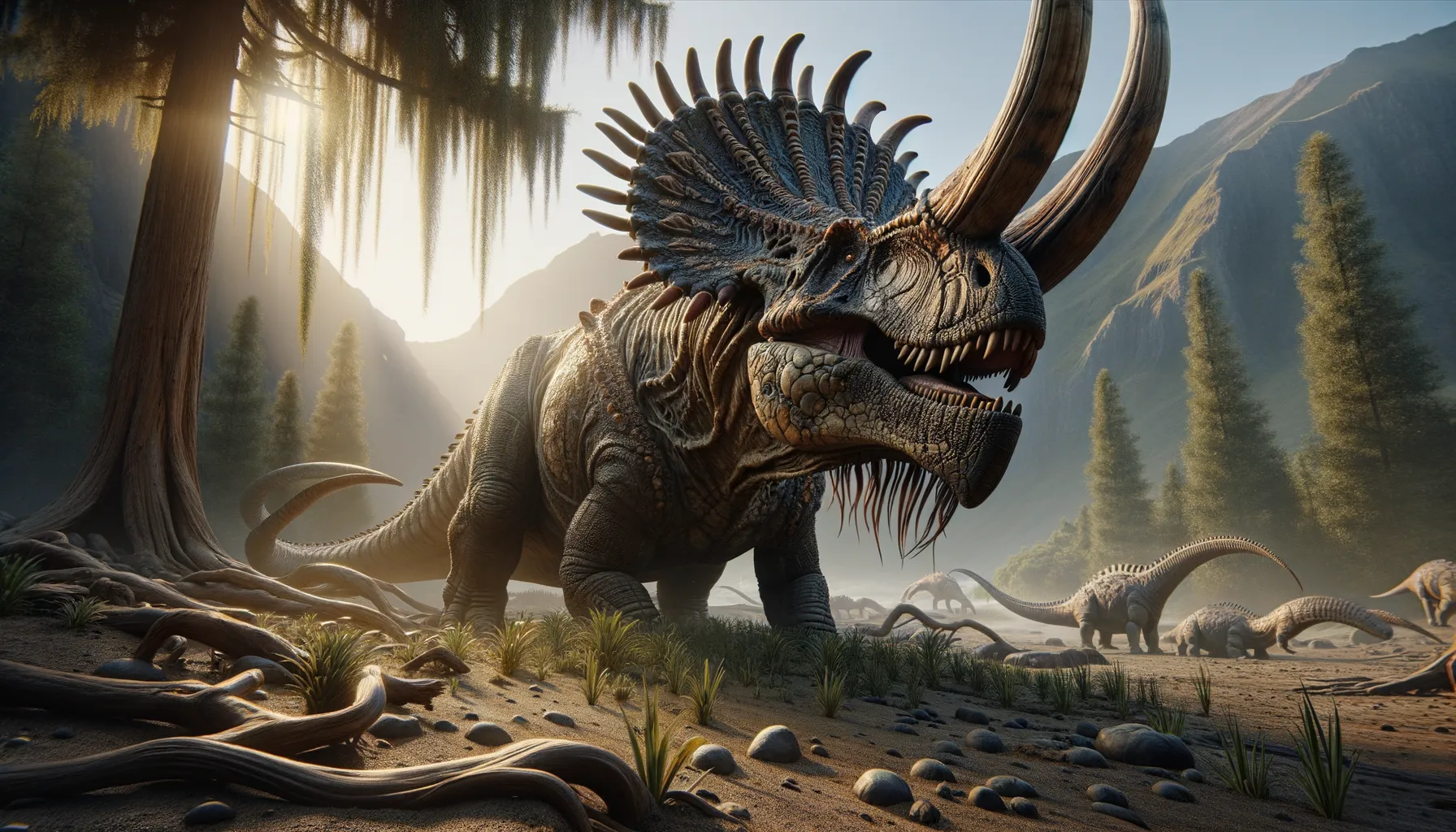
Minotaurasaurus
A dinosaur armored like a tank!
Period
Cretaceous
Length
Around 20 feet long.
Height
About 5 feet tall at the shoulder.
Weight
Approximately 1 ton.
Minotaurasaurus was a heavily armored dinosaur known for its intricate skin patterns and large clubbed tail, which it likely used for defense. This herbivore roamed the earth during the Cretaceous period. Its unique name, meaning 'man-bull lizard,' reflects its significant head ornaments. Despite its formidable appearance, Minotaurasaurus primarily fed on low-lying vegetation.
Diet
Minotaurasaurus was an herbivore, mainly feeding on ferns and cycads. Its beak-like mouth was adapted to bite off tough plant matter.
Hunting
Minotaurasaurus did not hunt as it was an herbivore. However, it needed to be cautious of predators and used its clubbed tail for defense.
Environmental challenges
Living in a semi-arid environment, Minotaurasaurus faced challenges such as finding sufficient water sources. During dry seasons, it might have had to travel longer distances to locate food. It also competed with other herbivores for limited vegetation. Another challenge included avoiding large predators that roamed the same areas.
Speed
Slow-moving due to its bulky body.
Lifespan
Estimated to be around 20-30 years.
First discovery
Discovered in the early 2000s in Mongolia.
Fun Facts
- Minotaurasaurus is named after the mythical creature Minotaur and the Greek word for lizard, 'saurus'.
- This dinosaur belonged to the ankylosaur family, well-known for having body armor and clubbed tails.
- Minotaurasaurus lived during the late Cretaceous period, about 70 million years ago.
- Its skull was the first well-preserved specimen discovered and was found in Asia, initially without the rest of its body.
- Minotaurasaurus had a distinctive skull with horn-like structures, contributing to its Minotaur-inspired name.
- It was a herbivorous dinosaur, feeding primarily on low-lying plants and vegetation.
- The dinosaur's bony armor and tail club likely served as a defense mechanism against predators.
Growth and Development
Minotaurasaurus grew rapidly in its early years, developing its armor plates to ward off predators. Juveniles stayed with adults for protection. Over time, its tail club grew larger and more pronounced, becoming a formidable weapon.
Habitat
This dinosaur inhabited open plains and sparse forests. It preferred areas with abundant plant life and water. Its strong legs were well-suited for crossing rugged terrain.
Interaction with other species
Minotaurasaurus coexisted with other herbivores and had to compete for resources. During migration, it moved in groups to thwart predators. Its tail club was an effective deterrent against carnivorous species.
Natural lifespan
In the wild, it lived up to 30 years.
Reproduction
Minotaurasaurus laid eggs in nests it built on the ground. Parental care was likely involved, where adults protected and occasionally incubated the eggs. Hatchlings grew rapidly under the care of their parents.
Social behaviour
Minotaurasaurus was likely a social animal, living in herds to protect against predators. These groups might have engaged in cooperative defense, using their tail clubs to ward off threats. Social hierarchies existed within groups, determining access to food and mates.
Fossil locations
Fossils of Minotaurasaurus have primarily been found in the Gobi Desert region of Mongolia. These fossil sites are crucial for understanding the dinosaur's anatomy and behavior. The discovery of complete skeletons has provided insight into its armored features.
